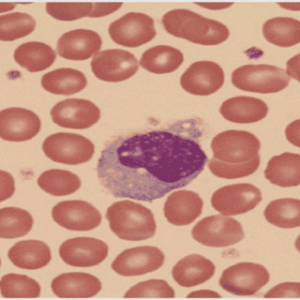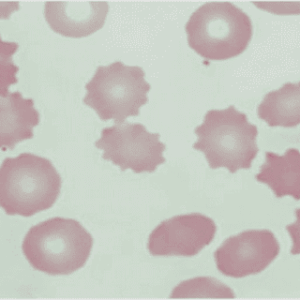(Downloads - 0)
For more info about our services contact : help@bestpfe.com
Table of contents
Part 1: Review of Literature
1: Whey Proteins
1.1: Beta-lactoglobulin
1.2: Alpha-Lactalbumin
1.3: Bovine Serum Albumin
1.4: Minor whey proteins
2: Functional properties of whey proteins
2.1: Solubility
2.2: Gelling properties
2.3: Emulsifying properties
2.4: Foaming properties
3: Pre-texturization of whey proteins
3.1: Pre-texturization in aqueous solution
3.1.1: Enzymatic modifications
3.1.1.1: Hydrolytic enzymes
3.1.1.2: Crosslinking enzymes
3.1.2: Physical Modifications
3.1.2.1: Heat treatment
3.1.2.2: High pressure
3.1.3: Chemical modifications
3.1.3.1: Glycation
3.1.3.2: Acylation
3.2: Pre-texturization in powder state
3.2.1: Chemical modifications under dry heating
3.2.2: Structural and functional changes during dry heating
4: Purpose of the Study
Part 2: Materials and Methods
1: Protein samples
2: Preparation of dry heated Powders:
3: Structural characterization of dry heated powders
3.1: Structural analysis in powder form
3.1.1: Fourier transform infrared (FTIR) spectroscopy
3.1.2: Differential scanning calorimetry
3.2: Structural analysis on reconstituted solutions
3.2.1: Reconstitution of whey protein powders in solution
3.2.2: Physical analysis
3.2.2.1: Protein solubility
3.2.2.2: Turbidity measurement
3.2.2.3: Determination of aggregate size
3.2.3: Chemical analysis
3.2.3.1: Gel permeation chromatography (GPC)
3.2.3.2: Reversed phase – high pressure liquid chromatography (RP-HPLC)
3.2.3.3: SDS-PAGE Analysis
3.2.3.4: Sulfhydryl Quantification
3.2.3.5: Surface hydrophobicity
3.2.3.6: Intrinsic hydrophobicity
3.2.3.7: Circular Dichroism
3.2.3.8: Mass Spectrometry
3.2.3.9: Protein identification by in gel trypsinolysis
4: Functional characterization of dry heat samples
4.1: Gel Hardness and Water Holding Capacity
4.2: Colorimetric Measurement
Part 3: Results and Discussion
Chapter 1: Influence of pH on the dry heat-induced denaturation/aggregation of whey proteins
1: Introduction, objectives and strategy
2: Article 1
2.1: Introduction
2.2: Material and Methods
2.2.1: Materials
2.2.2: Preparation of powders
2.2.3: Preparation of samples
2.2.4: Physical analysis
2.2.4.1: Turbidity measurement
2.2.4.2: Protein solubility
2.2.4.3: Determination of aggregate size
2.2.5: Chemical analysis
2.2.5.1: Gel permeation chromatography
2.2.5.2: SDS-PAGE analysis
2.2.5.3: Sulfhydryl quantification
2.3: Results
2.3.1: Composition of dry heated WPI
2.3.2: Characterization of soluble aggregates
2.4: Discussion
2.5: Conclusion
3: Additional Results and discussion
4: Marked Results
Chapter 2: Structural consequences of dry heating on purified Beta-lactoglobulin and Alpha-lactalbumin
1: Introduction, objectives and strategy
2: Article 2
2.1: Introduction
2.2: Materials and Methods
2.2.1: Materials
2.2.2: Preparation of powders and dry heating treatment
2.2.3: Samples preparation
2.2.3.1: Protein sample reconstitution
2.2.3.2: Recovery of non-aggregated proteins
2.2.4: Samples analysis
2.2.4.1: Gel permeation chromatography
2.2.4.2: SDS-PAGE Analysis
2.2.4.3: Sulfhydryl Quantification
2.2.4.4: Surface hydrophobicity
2.2.4.5: Circular Dichroism
2.2.4.6: Mass Spectrometry (LC-MS)
2.3: Results
2.3.1: Beta-lactoglobulin
2.3.2: Alpha-lactalbumin
2.4: Discussion
2.5: Conclusion
3: Additional Results and Discussion
3.1: Further characterizations of non-native monomers
3.2: Characterization of dry heated samples (solution 2)
3.2.1: In powder form
3.2.2: In solution form (after reconstitution at pH 7)
4: Marked Results
Chapter 3: The effect of protein powder medium on the denaturation/aggregation of whey proteins
1: Introduction, objectives and strategy
2: Results and Discussion
3: Article 3
3.1: Introduction
3.2: Material and Methods
3.2.1: Materials
3.2.2: Preparation of dry heated powders
3.2.3: Color analysis of dry-heated powders
3.2.4: Sample analysis
3.2.4.1: Sample preparation for analysis
3.2.4.2: Gel permeation chromatography
3.2.4.3: SDS-PAGE Analysis
3.2.4.4: Mass spectrometry
3.3: Results
3.4: Discussion
3.5: Conclusion
4: Marked Results
Chapter 4: The effect of physicochemical parameters on the composition and gelling properties of whey proteins
1: Introduction, objectives and strategy
2.1: Introduction
2.2: Materials and Methods
2.2.1: Preparation of dry heated powders
2.2.2: Determination of protein fractions
2.2.3: Gelling properties quantification
2.2.4: Statistical analysis
2.3: Results and Discussion
2.3.1: Effect of pH
2.3.2: Effect of water activity
2.3.3: Effect of heat treatment
2.4: Conclusion
3: Marked Results
Part 4: Conclusions and Perspectives
References



